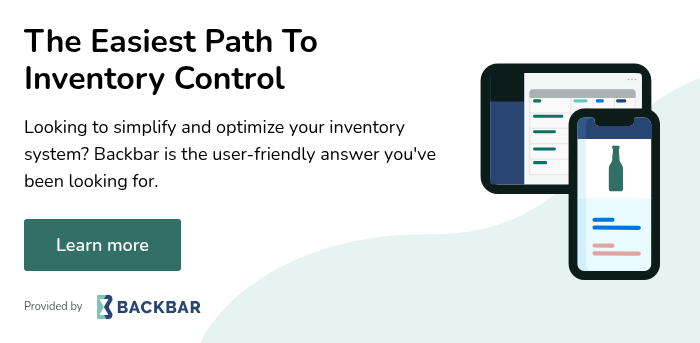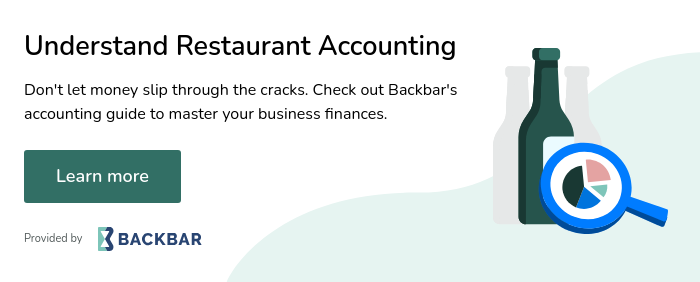Do your liquor costs keep creeping up and you don't know where the additional costs are coming from? Chances are they are right under your nose and you can actually take control of them.
Higher costs can come from a multitude of factors, so we'll help you get to the bottom of it.
First you'll want to calculate your liquors costs. Getting an idea of where your costs are can show you spots where you can save or where your bar is performing well.
What You Charge for Drinks
What you charge customers for drinks directly affects your liquor costs. Now obviously you want your costs to be low, because the higher the costs, the less money that goes into your pocket. So the more you charge, the lower your costs.
Alright now you're probably thinking "awesome I'm going to charge $20 for a cocktail and I'll make such a profit." No. Actually the opposite because you're going to lose a ton of business. But also relying on dirt cheap drinks isn't going to do you any good if you aren't selling at a high volume.
This is why finding the right balance between margins and volume is important when it comes to pricing.
So you're probably wondering, what are the right drink prices than? Honestly, I wish the answer was straight forward, but of course that's just not the case. There are many factors to look at, like how much it costs you to purchase each ounce of alcohol and the percentage you want to make off each drink.
Your Pour Sizes
We've all heard it: portion control. Though it might be more applicable to dieting, it can also be applied to liquor pours.
In fact, it's probably one of the most important things to consider when it comes to liquor costs and can end up having a huge impact on your bottom line.
Most bars use a standard pour size of 1.25 or 1.5 ounces. Of course, there might be some exceptions, like for a high-end whiskey you might do a 2 ounce pour, in which your customers are willing to pay more.
Whether you choose a standard pour size of 1.25 ounces or 1.5 ounces, the most important thing is to stick to it and get your bartenders on the same page to keep things accurate and consistent. After all, the price you charge is based on the amount of alcohol the recipe calls for, so if you're charging for 1.25 ounces and your bartenders are pouring 1.5 ounces that's an additional 20% cost to you...on each drink!
Now imagine how many drinks are poured at your bar in a week! Actually you might not want to.
Your Product Mix
A product mix is the different products or brands your bar offers for bottled and draft beer, liquor and wine, and your costs comes from a mix of the products you sell.
A higher end bar with more offerings will have higher costs than a dive bar that only has well products or a smaller range of products. On the flip side, places that have a wider product mix also charge more for craft cocktails and premium liquors, bringing liquors costs back down.
Let's look at two different vodkas, say Grey Goose and Bartons. Bartons will costs less than Grey Goose, so if you sell a ton of Grey Goose one week, you're liquor costs are going to be higher.
So having a variety in your product mix is important to keep costs balanced because you're going to have people that come in to your bar that just want a well vodka soda and ones that want a Grey Goose and soda.
Inventory Shrinkage
Alright so your bartenders give out a couple free drinks to some unhappy customers, what's the big deal? Well the big deal is that these "free" drinks can eat into your bottom line by 20-30%.
Now these drinks don't seem too free, do they?
Unfortunately you have to watch out for more than just free drinks being poured because shrinkage comes whenever a product is used but not sold.
Shrinkage can also come from over pouring, broken bottles or glasses, rejected drinks, and unfortunately, 75% of all inventory shrinkage comes from theft, most of which is by your employees.
Setting the correct par levels so you don't have excess inventory sitting around can help avoid any temptation for anyone with access. As we mentioned above, using measured drink pours will help with liquor costs and can help to reduce shrinkage behind the bar.
Unhappy Hour
Is happy hour really that happy for bars and restaurants? Really you're just selling the same drinks for a lower price, which increases liquor costs.
Of course you hope that sales volume will increase, but you can't predict that. You want to make sure you're running promotions that will get new guests into your bar to increase sales volume and offset the reduced margins per drink, rather than just discounting drinks for regulars.
If your happy hour really only caters to your regulars and provides them with cheaper drinks, all you're doing is eating into your margin and lowering your profits.
Offer mid and high end products in happy hour rather than just your cheapest drinks and beers. With drinks at all price points, people can drink what they want and feel they are getting a good deal and offering high end liquor and cocktails will encourage people to keep ordering them.
-1.jpg?height=400&name=alcohol-bar-beer-1283219%20(1)-1.jpg)




